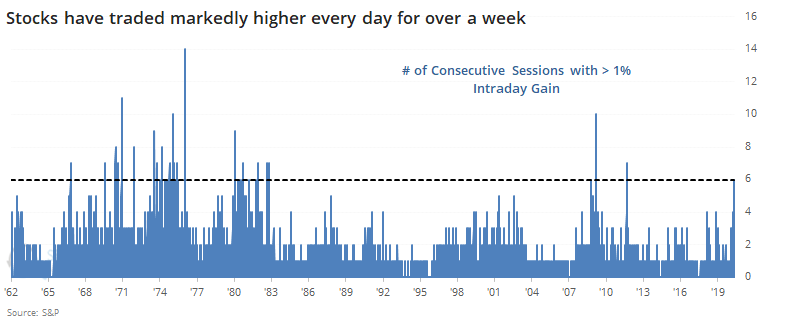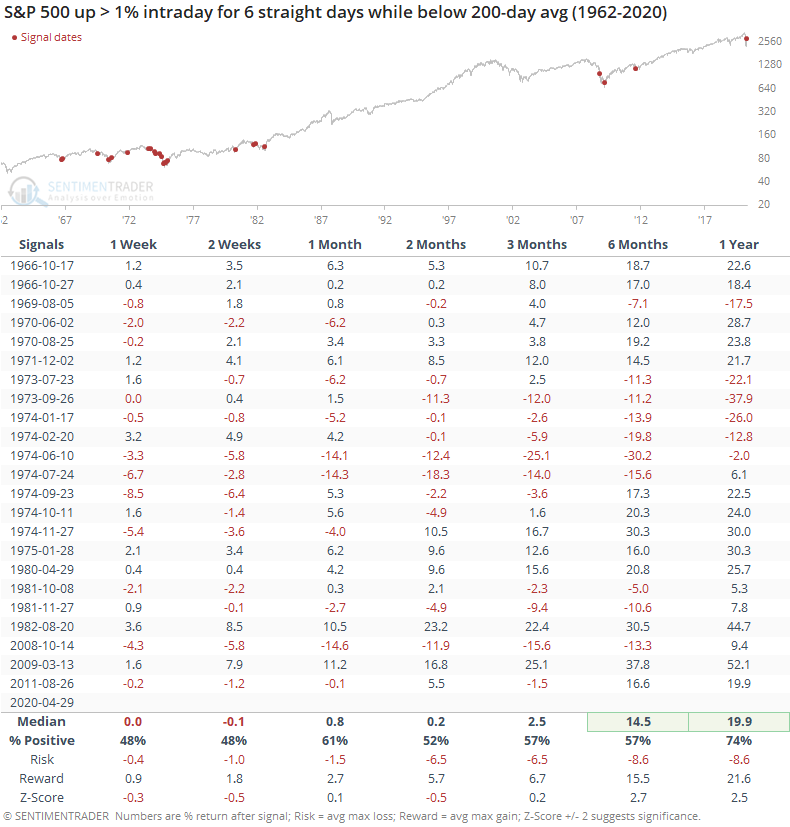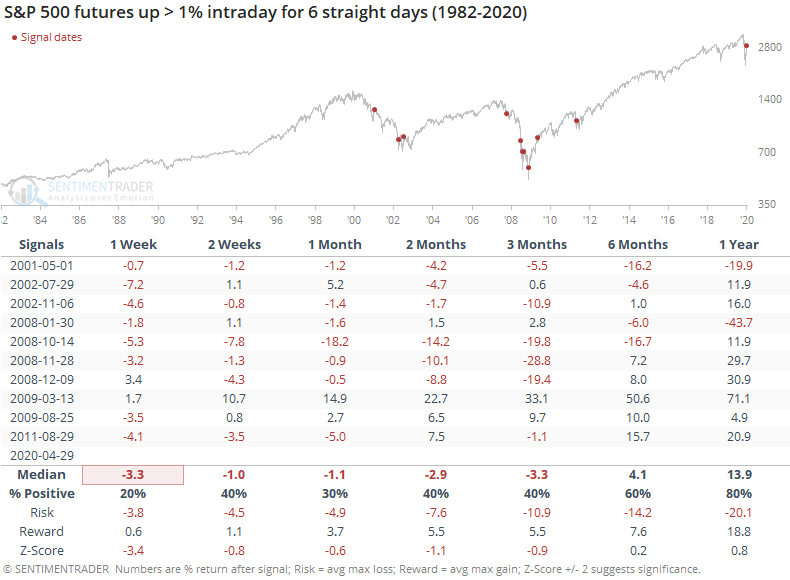S&P notches yet another big intraday gain

Small-cap stocks have stolen the spotlight by enjoying a record run of days with more than a 1% daily gain. The broader market has rallied, as well, even if giving up some of those gains on an intraday basis.
Over the past 6 days, the S&P 500 has traded higher by at least 1% at some point during the day. That's the longest streak since 2011 and has been exceeded only a few times in the nearly 40 years. It was more common prior to the early 1980s, at least if we can rely on intraday from data back then.

Most of these streaks occurred during downtrends when volatility was higher. If we look for any time the streak lasted 6 days while the S&P was trading below its 200-day average, then we get the following.

These thrusts led to some back-and-forth over the short-term as buyers took a breather. By a month later, returns turned more consistently positive and they were significantly so over the next 6-12 months. Since these instances suggest thrusts within bear markets, it makes sense that the long-term returns were above average.
Using a traded vehicle like a futures contract provides more accurate intraday data, so let's look at the same set of streaks going back to their inception in 1982.

We don't need to stipulate that they were trading below the 200-day average, because all of them were. And most of them were at least a temporary head-fake. The only signal that didn't show a negative return at some point was the kick-off to the new bull market in March 2009. That one rocketed higher and just kept going.
So, if we see something similar in the coming week(s) it will give at least a little more credence to the idea that we've witnessed something other than just another bear market rally.

